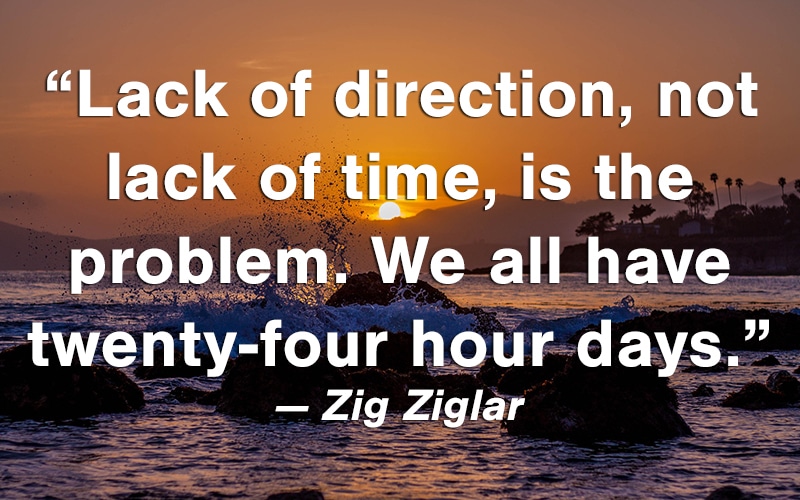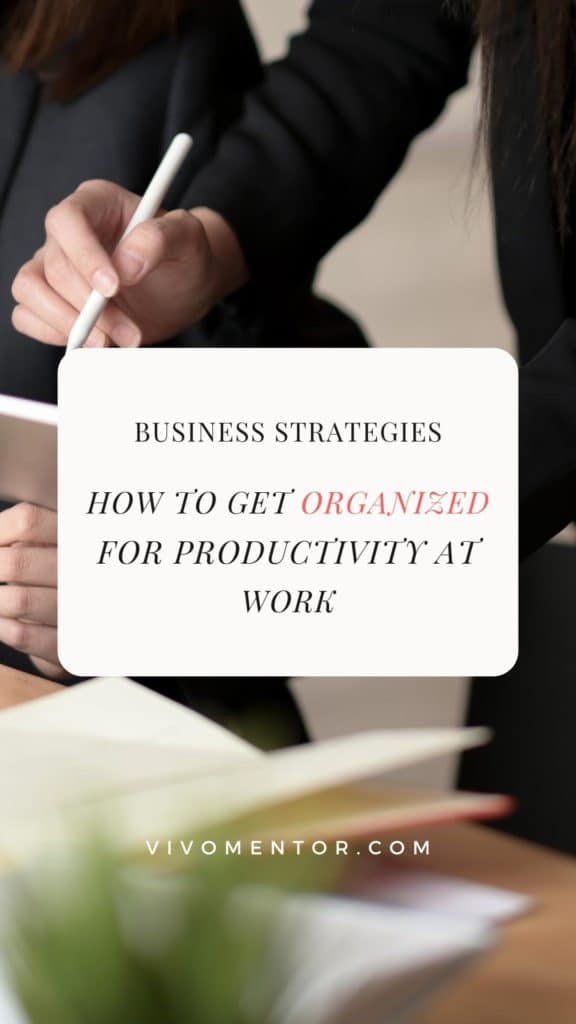What are some ways to get organized for productivity at work? It is important to have systems that work for you, so that you can stay organized. Higher productivity is attained when people are well-organized.
People are often disorganized because they feel overwhelmed. They can’t find the information they need, can’t make things happen, or don’t know where to start.
Any project can be broken down into manageable pieces. This will protect you from disorganization.
You might be struggling to achieve productivity if you lack organization. While some people are naturally organized, others need to be taught how to organize.

How to Get Organized for Productivity at Work
Even if you aren’t naturally organized, there are many ways you can improve your organization.
1. Make sure you clean your work area
Your productivity will suffer if your work environment looks like it has been damaged by a recent natural catastrophe.
Cleaning your work area is the first step to better organization. This includes getting rid of all trash and organizing your papers in file folders and binders.
2. Organize your computer and email
It’s time to organize your computer and email. If you have fifty icons on your computer desktop, and hundreds of emails in your email list, it is time to get rid of them.
You should ensure that important documents are kept in logical folders. Also, remove any unneeded icons from your desktop.
Spend time organizing your email to ensure that you delete the unimportant ones and organize the important ones into folders, so you can find them whenever you need them. Read any unread mail.
3. Make use of a planner
People who are productive plan their days with purpose. A daily planner, whether it is on paper or electronic, can help you stay on track and be more productive.
You should plan your next day’s work after you finish your work day. This will allow you to start fresh the next morning and be able to know what needs to get done first.
4. Concentrate your efforts
Instead of trying to do it all at once, focus your efforts and learn to be focused instead of multitasking. You can set a time each day to check email, answer voicemails, and use social media. Spend the rest of your time on more important tasks.

5. Do not procrastinate
It’s tempting sometimes to put off tasks you don’t want. This can only make you late and delay the inevitable. You can do anything you want, as long as you have self-discipline and the ability to finish it. This will save you time and energy.
6. A routine is important
You’ll be more productive if you have a consistent routine than attempting to do things every day. Although it may sound monotonous, you will find that you enjoy the routine and get more done in a shorter time.
You can start by only doing part of the project or working in smaller amounts. To keep you accountable, get a friend. Reward yourself for completing the task.
It doesn’t matter what you are trying to achieve, not all things have the same importance. It is important to establish your priorities.
Final Thoughts on Organizing for Productivity at Work
It makes my life so much simpler to be organized and it is important to make time for both organizing and cleaning up daily.
Organization is a skill. You must practice your skills in order to be successful. It is much easier to put what you have learned into practice than to play catch-up. You only need to organize for a few minutes each day.
A Guide to Organize Your Workspace – How to Declutter Video
From the video: Imagine a workspace where everything you need is within reach. Every tool. Every file. Easily available for you to access. When you organize your workspace, it removes the barriers from getting your work done, and speeds up the process between your thought and your creation.
Developing a streamlined system might be daunting to tackle at first, but the extra time you’ll create for yourself in the future is absolutely worth the investment. In this video I’ll share an overview of my organization system which I use to keep my gear, files, and workspace in order.
The problem with cleaning up is that things just get messy again. I’ll be honest, I hated cleaning. But the reason why is because I didn’t have a system. I had too many areas where I would just dump miscellaneous things into, because I didn’t know where to put it.
Over the years that turned my closet and drawers into a messy avalanche of tangled randomness, that caused me a lot of decision fatigue every time I had to put something away, and frustration when I had to retrieve something.
This was a constant interruption and often killed my momentum on projects I would get distracted trying to find a tool or piece of reference I knew I had somewhere. Back then I wasn’t cleaning I was hiding things. What I was missing was a standardized place for everything– a streamlined workspace that helped me to do my work and was easy to maintain.
After watching a lot of YouTube videos reading some books and looking up inspiration I was ready to get organized and just maybe find joy in cleaning.
Because my background is in design I tackled the problem, well like a designer. I thought of three key things when organizing my space.
- The function: the purpose of the space.
- The flow: how easy it would be to access my tools.
- The familiarity: knowing where things go without even thinking about it.
All with the goal of making everything around me intuitive. Now that you have an idea of my approach I’ll share the organization process I took step by step.
